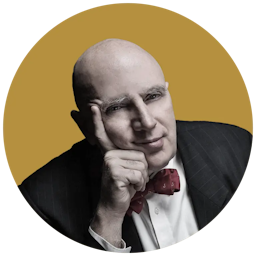Jazz Descends on Fair Gotham
This article is from the archive of The New York Sun before the launch of its new website in 2022. The Sun has neither altered nor updated such articles but will seek to correct any errors, mis-categorizations or other problems introduced during transfer.

Holy Halloween, Batman! On All Hallows Eve, all manner of costumed crusaders converged on Gotham City to confer, converse, and otherwise hobnob with their brother wizards. These caped crime-fighters didn’t just parade through the streets of Greenwich Village — they demonstrated their superpowers in the city’s nightclubs, too. On Wednesday and Thursday nights, that merry band of pranksters known as the Sun Ra Arkestra, who dress every night of the year as though it were Halloween, beamed in from outer space for four shows at Iridium.
And if that wasn’t enough, on Tuesday, a real superhero, that high-kicking Amazon from Paradise Island known to the world as Wonder Woman, began a weeklong run at Feinstein’s at Loews Regency, cleverly disguising herself as her secret identity: the singer, actress, and beauty queen Lynda Carter.
Who better to spend Halloween with than a ghost band? In the parlance of the music industry, that generally refers to an ensemble that continues under its original leader’s name after said leader has died — most famously the Glenn Miller and Count Basie orchestras. In the case of the Sun Ra Arkestra, however, the term is to be taken literally. The band is actually conducted by the spirit of its founder, Sun Ra (aka Le Sony’r Ra, aka Herman Blount), who dwelt with us here on Earth from 1914 to 1993 and now continues to direct the Arkestra from outer space by channeling his spirit through his longtime associate, the alto saxophonist Marshall Allen, who conveys Ra’s instructions through his own physical form.
The Arkestra’s current lineup is about 20 strong, including saxophones and flutes (three tenors, two baritones, one straight alto, in addition to Mr. Allen), brass (three trumpets, and one trombone, tuba, and horn), piano and keyboards, bass, guitar, drums, percussion, and a vocalist doubling on what looks like an electric megaphone. In Ra’s time, the Arkestra was associated with the avant-garde fringe of jazz, and, indeed, everything it plays could be called far-out. Yet of the eight numbers the band played in its opening set on Wednesday, only one was even remotely free-form, this being a largely improvised, extended showpiece titled (for the occasion) “Halloween in Harlem.”
The rest of the show was a mixture of big-band swing and old-school rhythm and blues, conveying a lot of the energy one associates with the black territory bands of the 1930s. The Arkestra played two of Ra’s more conventional songs with lyrics, “Dreams Come True” (from “Sun Sound Pleasure”) and “Love in Outer Space” (from a 1975 single). Mr. Allen also spotlighted the veteran bassist John Ore (who first recorded with Lester Young in 1954 before spending most of his career with Thelonious Monk and then Ra) on a bouncy rendition of “Sophisticated Lady.” Along the way, various members of the group evoked Louis Armstrong, Dizzy Gillespie, and Harry Belafonte, while Mr. Allen played both an ewi-style electronic wind instrument, and, on alto, offered a variation on the same screeching solo (with right hand flailing wildly over the lower key pads) that he’s been playing for 50 years.
Even with Ra in the great beyond, his music continues to be a consistent draw: The Arkestra played four recent dates in New York, and continues to release new albums. The two most recent Ra releases are historical: “The Heliocentric Worlds of Sun Ra” (ESP Disk) contains two 1965 albums on a single disc, both of which find Ra and company in more of a classical avant-garde mode. And “Springtime in Chicago” (Golden Years of Jazz) is a live double-set recorded in September 1978 that contains several of Ra’s inspired re-enactments of classic charts by his one-time employer, Fletcher Henderson.
Wednesday’s Halloween show concluded with the Arkestra playing a lively calypso and parading about the Iridium in its familiar non-biodegradable fabrics, joined by assorted witches, cats, wizards, and Cruella De Vil. Many spirits were channeled — and imbibed — and much fun was had.
The previous night, at the Regency, Ms. Carter made her New York cabaret debut. Regrettably, most of her arrangements were plain vanilla, and her song choices were somewhat pedestrian, but Ms. Carter herself is a performer of considerable personality. And, to put it bluntly, she has stored up a lot of credibility with those of us who, as impressionable youngsters in 1975, first discovered that there was a difference between boys and girls by watching her strut about in satin tights, fighting for her rights (and for the old red, white, and blue).
Ms. Carter was at her best when channeling iconic love goddesses such as Rita Hayworth (whom she portrayed in a 1983 TV movie) on “Put the Blame on Mame” and Peggy Lee on “Fever.” Personally, I don’t think any contemporary performer should sing “Fever”; it’s more of a piece of special material that Lee fashioned for herself out of an R&B hit than a song to be re-interpreted, but Ms. Carter did sing it with an irresistible sensuality. She is relentlessly peppy and cheerful, even on sad songs such as “Blues in the Night,” and almost seems to embody the spirit of Shirley Temple in the form of Julie London.
After the opening show, Ms. Carter was feted in Feinstein’s back room by such fellow television stars as Joan Collins and Joan Rivers (I wouldn’t have been surprised to see Joan Crawford and Joan Fontaine). Then, unbeknownst to the crowd, Ms. Carter discreetly slipped off, and, while no one was watching, did her famous costume-changing spin, transforming herself back into Wonder Woman. She next joined the Robin Hood-like members of the Arkestra to patrol the streets of New York, making sure that we city-dwellers were safe during the holiday festivities.
wfriedwald@nysun.com

